#Roman cemetery
Text
The Lost Plot (by the Guardian) and 'The Lost King' Exhibition
A number of film critics have now viewed the new Steve Coogan movie, THE LOST KING, about the finding of Richard III’s remains. Reviews have been mixed but generally quite positive; I imagine it might be one of those ‘marmite’ films, which viewers either love or loathe. A exhibition in The Wallace Collection had also been arranged to coincide with the upcoming general release of the…

View On WordPress
#"Princes"#All Hallows Church#Henry IV#Henry VIII#Iron Age#Jonathan Jones#Mortimer boys#Mortimer&039;s Cross#Paul Delaroche#Richard III Society#Roman cemetery#Steve Coogan#Tanner and Wright#The Guardian#The Lost King#The Wallace Collection#Tower of London
1 note
·
View note
Text






All Saints' Day & All Souls' Day in Poland
On 1 and 2 November, Polish necropolises are lit up with the glare of candles, which we light on the graves of our loved ones.
#all saints day#all souls day#catholic#poland#cemetery#graveyard#graves#gravestone#roman catholicism#catholicism#christian#christianity#all hallows eve#all souls' day#all saints' day#wszystkich świętych#zaduszki#november#candles#candlelight#*
3K notes
·
View notes
Text



Should've been honest, should've told the truth...
#911#buddie#911edit#buddieedit#911 on fox#911 fox#911 abc#evanbuckleyedit#eddiediazedit#my edit#otp: you don't need to pretend with me#usercam#at this point i should have a cemetery tag lol#i need a maisie tag#and a pining eddie tag#'Anna how many sets where you put the exact same 100 frames of eddie under some heartbreak lyric are you gonna make?'#all of them okay#ALL OF THEM#im not even changing the coloring anymore#i just put the text in and move#yeah#the cemetery is my roman empire#lol#911verse#evan buckley#eddie diaz
172 notes
·
View notes
Text
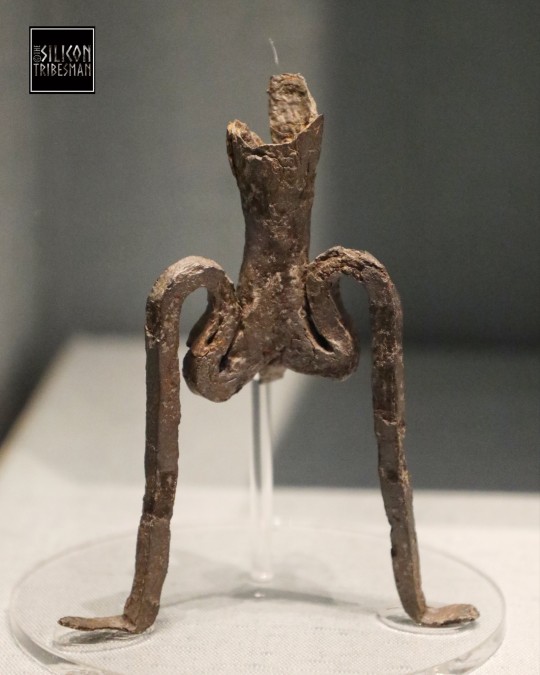
Roman Candle Holder from the Bath Gate Cemetery, 2nd Century CE, Corinium Museum, Cirencester
#Roman#romans#roman living#candle holder#archaeology#religion#relic#artefact#metalwork#metalworking#sconce#cemetery#Corinium#Cirencester
58 notes
·
View notes
Text
Polish archaeologists have uncovered Roman centurions’ letters, alongside Italian pottery and coins and other artifacts, possibly from a centurion's office, in Berenike, Egypt. Nearby, a pet cemetery revealed 200+ burials and rare ceramics from Italy, Africa, and India.
33 notes
·
View notes
Photo
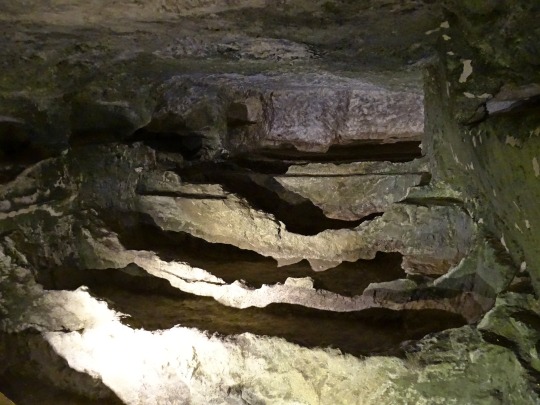


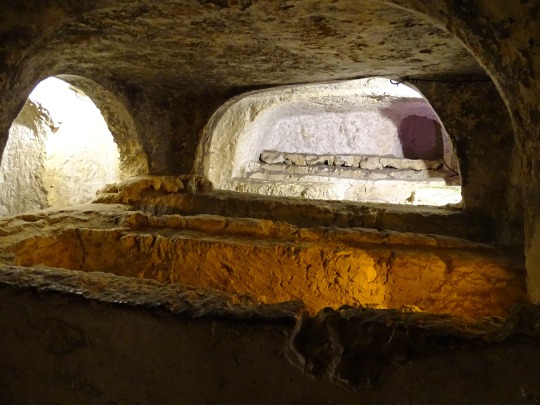
Ancient Roman catacombs of Rabat, Malta.
Check out Rabat on my website: https://wanderingjana.com/rabat
#rabat#cemeteries#tombs#malta#catacombs#ancient rome#roman#archaeology#underground#travel#history#my photos#travel blogger#original photography#wanderingjana
207 notes
·
View notes
Text
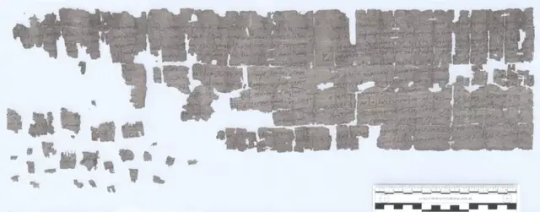
Archaeologists Find Roman Centurions' Letters in Ancient Animal Cemetery in Egypt
Discovered among the graves of hundreds of cats, dogs and monkeys, the correspondence was likely written by centurions in the first century.
An ancient pet cemetery in Egypt is becoming a gold mine for rare Roman history. Alongside its carefully constructed graves of more than 200 beloved cats, dogs and monkeys, archaeologists have now found letters handwritten 1,900 years ago by Roman centurions stationed nearby.
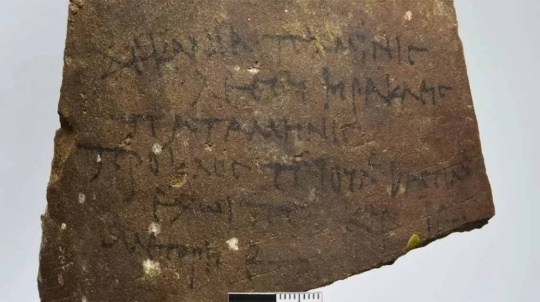
Though Rome controlled Egypt for centuries—from the year 30 to the mid-600s—few Roman sites still exist in the region, lead researcher Marta Osypińska, an archaeologist at Poland’s University of Wrocław’s Institute of Archaeology, tells Science in Poland’s Ewelina Krajczyńska. The burial ground, which dates back to the first and second centuries, is located in Berenike, a Red Sea port in southern Egypt built by Roman Emperor Tiberius.
Osypińska’s team first discovered the cemetery in 2011, and they’ve been slowly excavating it since then. Among the burials of cats, dogs and exotic monkeys, researchers have found ceramics, Roman coins and now, several letters written on papyrus by military officers who commanded units of Roman legions.
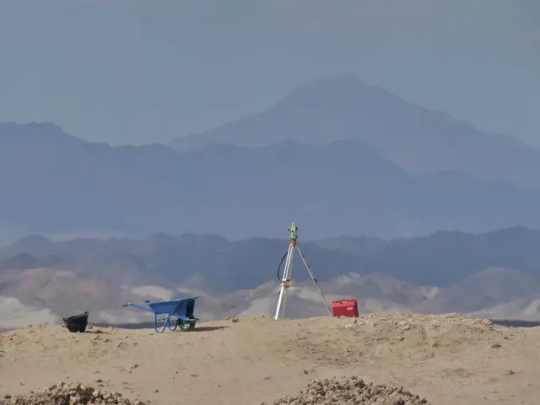
According to a statement by the University of Wrocław, these “priceless sources of knowledge about the ancient inhabitants of Berenike” are from the era of Emperor Nero, a cruel Roman ruler of the mid-first century. During his reign, Berenike was a hub of cross-continental trade, through which goods from India, Arabia and East Africa flowed, Osypińska says in the statement. The port was home to regional merchants, Roman higher-ups in charge of trading and—as historians have long suspected but never before proven—a unit of the Roman military.
The newly-found correspondence contains several names of presumed Roman centurions: Haosus, Lucinius and Petronius. In one letter, Petronius asks Lucinius, who is stationed in Berenike, about the prices of some exclusive goods, Osypińska tells Science in Poland. Petronius writes that he’s sending money via “dromedarius,” a unit of Roman soldiers traveling on camels, and tells Lucinius to provide the soldiers with veal and tentpoles.
Researchers believe ancient Romans likely kept the papyri in a nearby office which was later destroyed, accidentally distributing its contents over the pet cemetery, as McClatchy’s Aspen Pflughoeft writes. Excavators found the papyrus in rolled fragments, which they showed to Rodney Asta, an expert of ancient inscriptions, who pieced together a page approximately one and a half feet long and a foot wide, Osypińska tells Science in Poland. Among the animal graves, researchers have found countless ostracons—pieces of pottery etched with writing—but the papyri are the first paper texts to be found on-site.
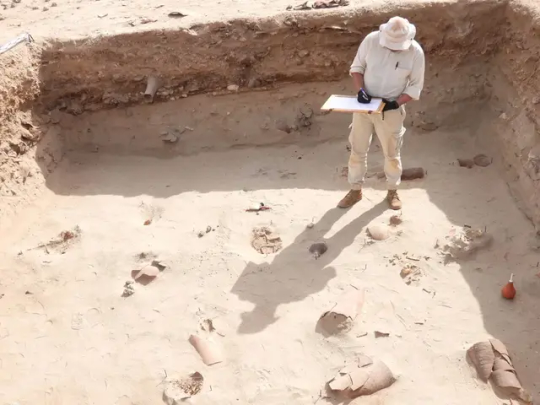

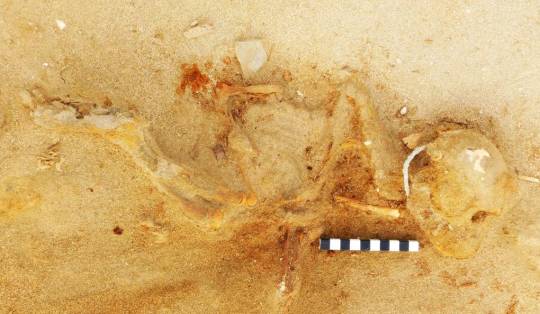
The letters are the latest evidence of advanced Roman trade to be found in the cemetery, per the statement: The skeletons of several buried monkeys, recently identified as macaques native to India, show that Romans imported non-utilitarian animals across oceans. These primates, along with long-haired cats and miniature dogs, were “elite pets,” and many were buried with toys, ceramics or other animal companions.
As Osypińska notes in the statement, it may seem difficult to reconcile the image of commanders of an ancient foreign legion with such animals, which were “treated as family members.”
“However, our findings unequivocally show that the military elite surrounded themselves with elite pets and led an exclusive lifestyle,” she adds.
By Sonja Anderson.

#Archaeologists Find Roman Centurions' Letters in Ancient Animal Cemetery in Egypt#Berenike#ancient pet cemetery in Egypt#Roman Emperor Tiberius#ancient artifacts#archeology#archeolgst#history#history news#ancient history#ancient culture#ancient civilizations#roman history#roman empire
20 notes
·
View notes
Text
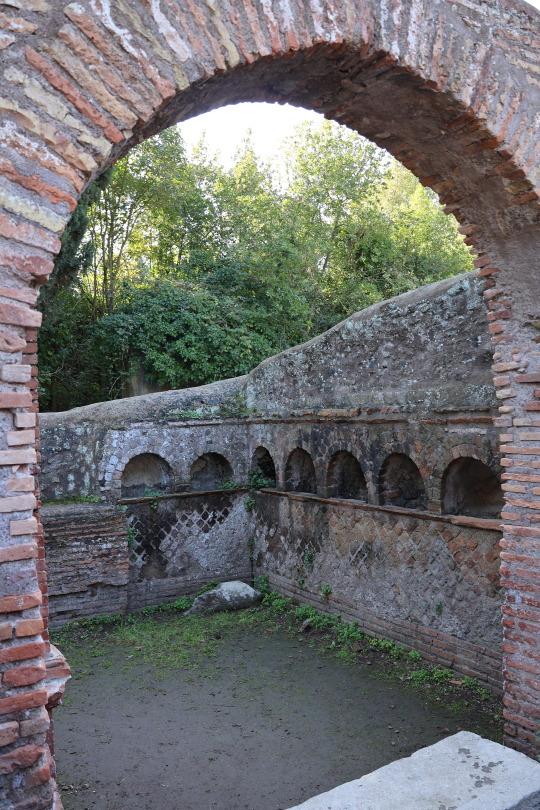
An Ancient Roman columbarium located just outside the ancient port city of Ostia Antica.
Rome, Italy
#ostia antica#italy#italia#roma#rome#ancient roman#ancient rome#columbarium#columbaria#cemetery#tomb#original photography#photography#taphophile#taphophilia#lensblr#photographers on tumblr#tombs#roman architecture#archaeology#wanderingjana
23 notes
·
View notes
Photo

Six Hills Way, Stevenage, Herts; 8.10.2016. The six ‘hills’ are Roman-era (c. 100 AD) burial mounds or tumuli.
#photography#photographers on tumblr#dubmill#Stevenage#Hertfordshire#England#UK#Britain#Six Hills#barrows#tumuli#Roman#cemetery#Great North Road#original photography#original photograph#walk#Stevenage circular#2016#08102016
54 notes
·
View notes
Text
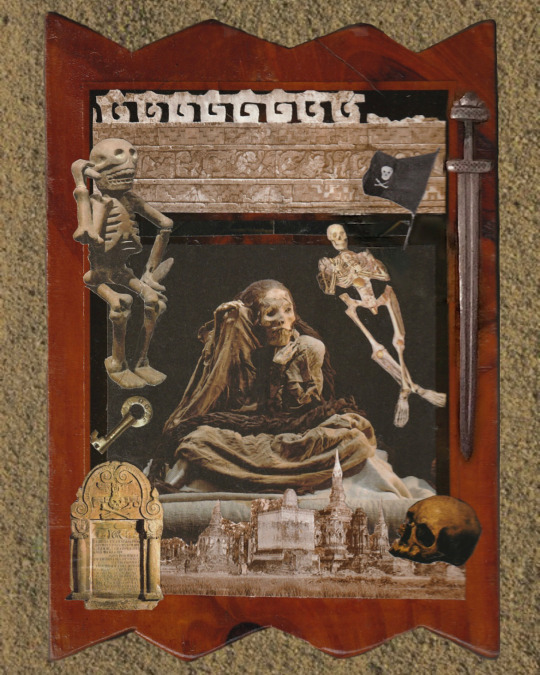
du berceau au tombeau, 2023. paper collage on wood by Elysian Fields
#art#art history#artists on tumblr#books & libraries#museums#analog collage#collage art#paper collage#history#pompeii#roman art#greek mythology#skeleton#dagger#cemetery#ancient history#ancient art#mythology and folklore#analog#paper art#collage artist#physical art#mixed media#gothic art#gothic#ghost#pirates#mystical#my art#original art
7 notes
·
View notes
Text

"And I am convinced that nothing can ever separate us from God’s love. Neither death nor life, neither angels nor demons, neither our fears for today nor our worries about tomorrow—not even the powers of hell can separate us from God’s love. No power in the sky above or in the earth below—indeed, nothing in all creation will ever be able to separate us from the love of God that is revealed in Christ Jesus our Lord." -- Romans 8:38 - 39
Photo: Edinburgh, Scotland
#edinburgh#scotland#dunedin#uk#great britain#castles#british castles#united kingdom#europe#graveyards#cemetery#spooky#halloween#romans 8:38#explore#adventure#travel#tourism#bible verses#historic cities#edinburgh castle#edinburgh old town#gaelic#world travel#see the world#holy scripture#holy bible#new testament#hope#inspiration
7 notes
·
View notes
Text
“. . . Optatus, freedman of Publius and Clodia, lived six years and eight months. // Here my parents burnt my dead body in the flower of my age. So long as was allowed me I lived more acceptable than any other to the gods above, of whom none could speak ill in bitter word . . . to the gods above whom loyalty compels . . . now modestly you . . . say you: ‘Optatus, lightly rest the earth on you.’ . . . a child who had not yet your share of years . . . when I am torn away from my mother's bosom to death . . . in life I was dear to departed souls, and very dear to the goddess who made away with me under unlucky omens. Cease now, mother mine, cease to torment yourself in vain sobs of wretchedness each livelong day, for grief such as this has not now befallen you alone; sorrows the same as these have fallen to the lot of mighty kings too. Bright with never-fade . . .”
Roman epitaph, CIL 1.1223
x
#my posts#epitaphs#graveyard#history#quotes#words#q#Rome#roman empire#roman history#ancient rome#ancient history#headstone#cemetery#death#mourning#Roman epitaphs#bright w never fade 🥺#book quotes#Roman epitaph#epitaph
9 notes
·
View notes
Text










St. Stanislaus the Bishop Catholic Cemetery (also known as the Old Cemetery), Ostrów Wielkopolski, Poland
#old cemetery#catholic cemetery#poland#catholic art#memento mori#catholic#roman catholic#roman catholicism#chritianity#christian#traditional catholicism#cemetery#autumn#autumncore#grave#graves#graveyard#tombstone#gravestone#tomb
328 notes
·
View notes
Text



I'm still standing at the exit...
inspired by @poughkeepsies
#911#buddie#911edit#buddieedit#911 on fox#911 fox#911 abc#evanbuckleyedit#eddiediazedit#my edit#otp: you don't need to pretend with me#usercam#at this point i should have a cemetery tag lol#the cemetery is my roman empire#okay#now im really gonna go#conan grey my beloved#911verse#evan buckley#eddie diaz
146 notes
·
View notes
Text
The remains of a high-status Roman woman and a child in a lead coffin found in a cemetery including both Roman and Anglo-Saxon burials in Northern England offer a fascinating glimpse into burial practices and the historical period's complex social structure.
23 notes
·
View notes
Text

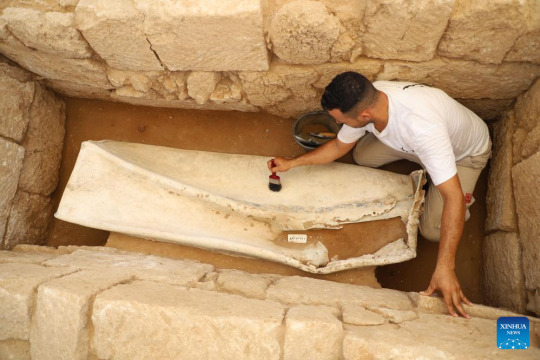

2.000-Year-Old Roman Cemetery Discovered in Gaza
Archaeologists working on a 2,000-year-old Roman cemetery discovered in Gaza last year have found at least 125 tombs, most with skeletons still largely intact, and two rare lead sarcophaguses, the Palestinian Ministry of Antiquities said.
The impoverished Palestinian territory was an important trading post for civilizations as far back as the ancient Egyptians and the Philistines depicted in the Bible, through the Roman empire and the crusades.
In the past, local archaeologists reburied findings for lack of funding but French organizations have helped excavate this site, discovered in February last year by a construction crew working on an Egyptian-funded housing project.


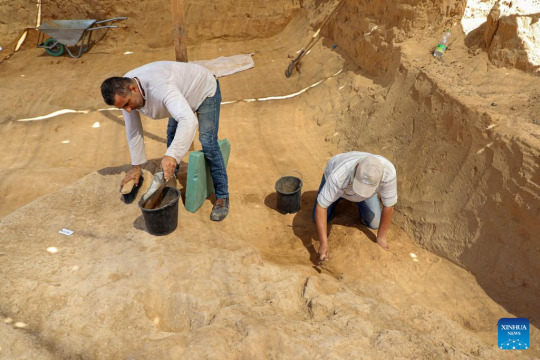
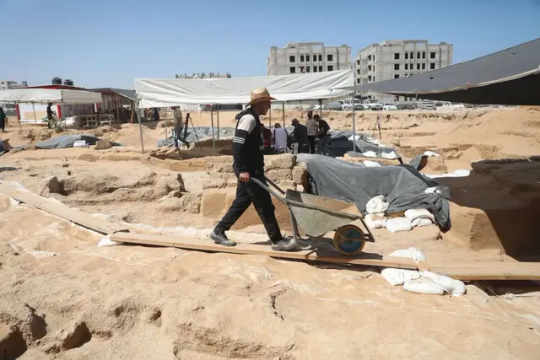
"It is the first time in Palestine we have discovered a cemetery that has 125 tombs, and it is the first time in Gaza we have discovered two sarcophaguses made of lead," Fadel Al-A’utul, an expert at the French School of Biblical and Archeological Research, told Reuters at the site.
One of the two sarcophaguses was decorated with images of grapes and the other with dolphins said A'utul, whose organization is supervising the work with help from French aid agency Premiere Urgance International.
"We need funds to preserve this archeological site so that history does not get washed away," he added.
A'utul said he hoped the site would become a tourist destination, with a museum to display the findings.
Engineers and technicians were working at the scene
At least 25 engineers and technicians were engaged on Sunday, despite the soaring heat, in digging, clearing the dirt, and preserving the skeletons. They have also been piecing together clay jars found inside some of the graves.
"This is unprecedented," said Jamal Abu Reida, General-Director of Gaza's Antiquities Ministry.
"It deepens Palestinian roots on this land and shows they date back thousands of years," he said.
Gaza has been under an Israel-Egyptian economic blockade since 2007 when the Islamist militant group Hamas, which opposes peace with Israel, took control. The narrow coastal territory's 2.3 million Palestinian residents have since endured several wars.


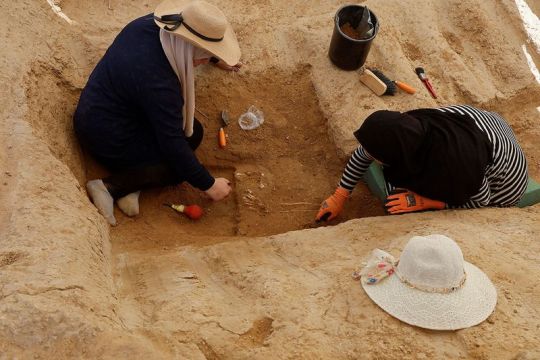
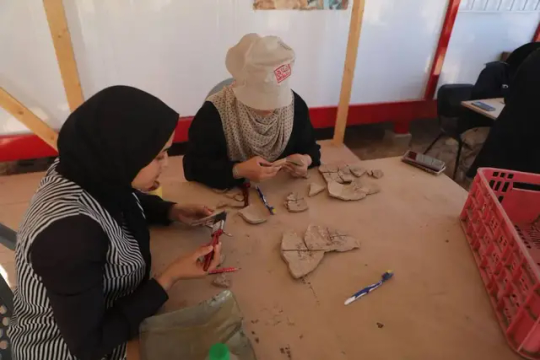


#2000-Year-Old Roman Cemetery Discovered in Gaza#ancient tombs#ancient graves#ancient sarcophagus#ancient artifacts#archeology#archeolgst#history#history news#ancient history#ancient culture#ancient civilizations#roman history#roman empire
145 notes
·
View notes